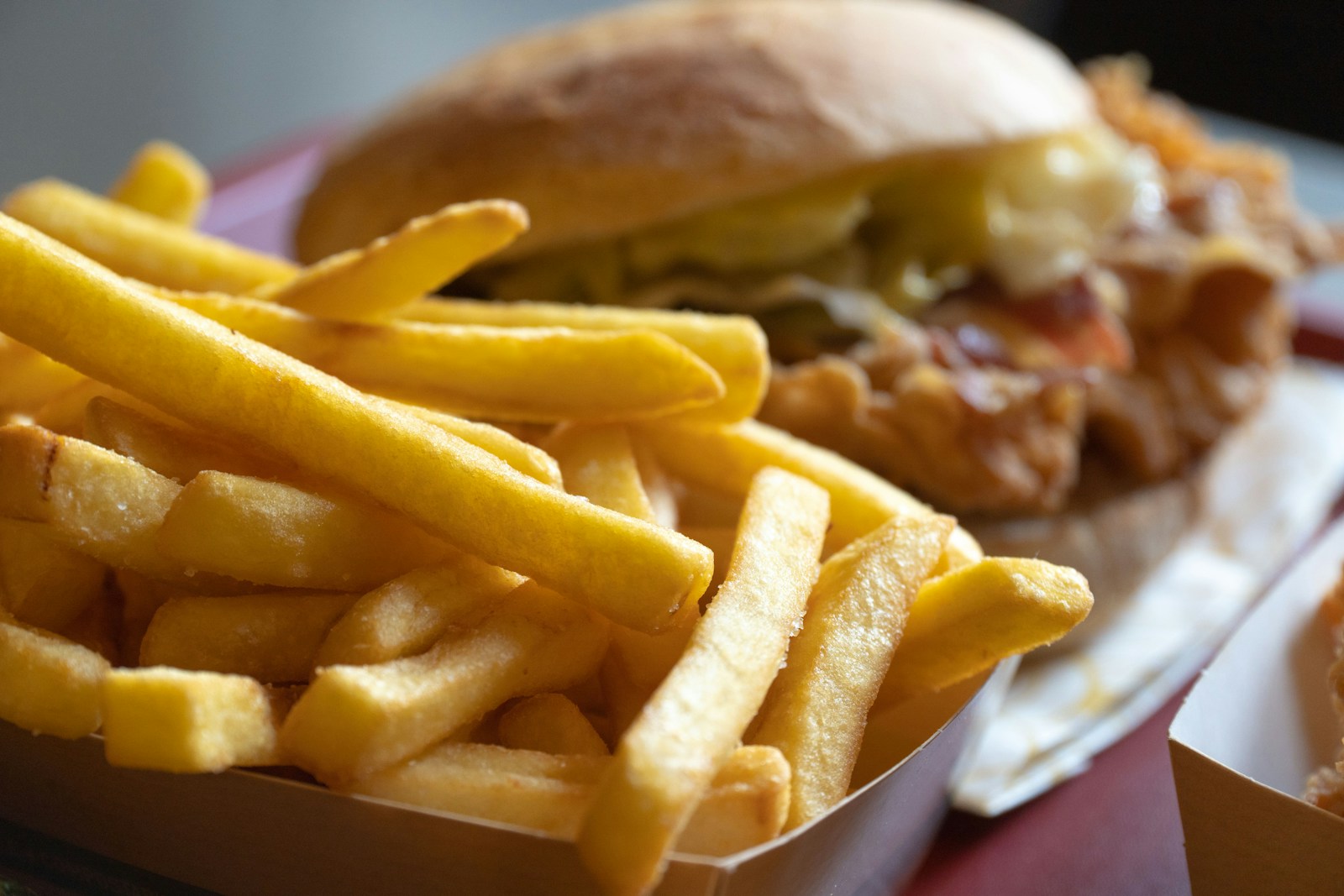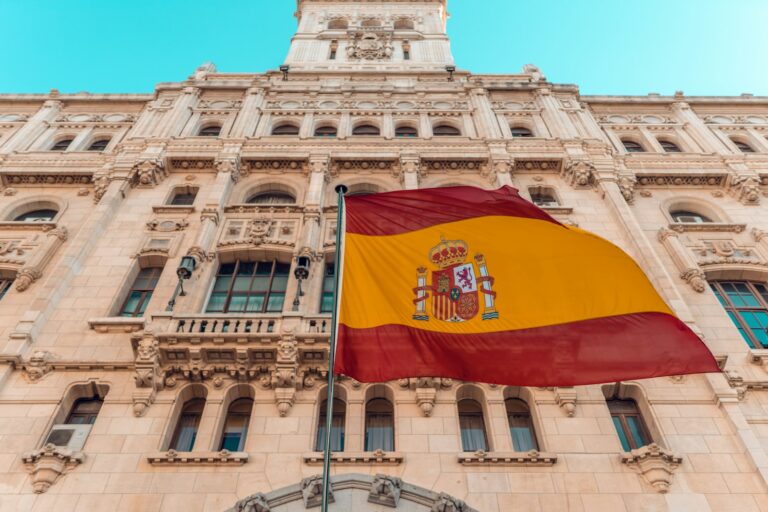How to Say “French Fries” in Spanish: A Comprehensive Guide
Imagine you’re sitting in a cozy café in Madrid, the aroma of freshly cooked food wafting through the air. You’ve got your eye on a plate of crispy, golden french fries at the next table. You want to order some for yourself, but there’s a catch—you need to ask for them in Spanish. Suddenly, your high school Spanish classes seem like a distant memory.
Don’t worry, you’re not alone! Many of us have found ourselves in similar situations, wishing we could just snap our fingers and summon the right words. The good news? It’s easier than you think. In Spanish, french fries are called “papas fritas” or “patatas fritas”. Depending on where you are, the term might vary slightly, but both are widely understood.
The Essential Spanish Phrase for “French Fries”
Want to order French fries in a Spanish-speaking country but not sure how? Don’t worry, it’s simpler than you think. In Spanish, French fries are commonly called “papas fritas.” This term is widely recognizable, especially in Latin America.
“Papas fritas”: The most Common Term
When in Latin America, use “papas fritas” to ask for French fries. This phrase combines the word for potatoes, “papas,” with the word for fried, “fritas.”
Breaking Down “Papas fritas”
Let’s simplify “papas fritas” for better understanding:
Knowing the meaning of each word helps you remember the term more easily.
Regional Variations of “Papas fritas”
In Spain, French fries are called “patatas fritas” instead of “papas fritas.”
Here’s a quick comparison:
Region | Term for French Fries |
|---|---|
Latin America | Papas fritas |
Spain | Patatas fritas |
Pronunciation Guide for “Papas fritas”
Getting the pronunciation right ensures you’re understood. Here’s how to say it:
Practice saying these in a relaxed tone, and you’ll sound more natural.
Using “Papas fritas” in Sentences
Want to use “papas fritas” in a sentence? Here are some examples:
These sentences are simple and practical for everyday use.
Regional Variations of “French Fries” in Spanish

Ever found yourself craving French fries but didn’t know how to ask for them in Spanish? Well, here’s your go-to guide for ordering those golden, crispy spuds across Spanish-speaking regions.
Spain: “Patatas fritas”
In Spain, you’ll ask for “patatas fritas.” This term directly translates to “fried potatoes.” If you’re in a Madrid tapas bar, just say, “Me gustaría unas patatas fritas,” and watch the server bring out a perfectly fried batch.
Mexico: “Papas a la francesa”
In Mexico, things get a bit more playful with “papas a la francesa.” It means “potatoes in the French style.” Next time you’re at a street food stall in Mexico City, you might say, “Unas papas a la francesa, por favor,” and enjoy this delicious version.
Argentina and Uruguay: “Fritas”
Heading down to Argentina or Uruguay? Keep it simple with “fritas.” This concise term gets the job done. Picture yourself at a parrilla (grill) in Buenos Aires saying, “Quiero unas fritas con mi bife,” and soon enough, you’ll have fries with your steak.
Other Latin American Terms for French Fries
In other parts of Latin America, you might come across “papas fritas” or even “frituras.” These terms are also straightforward. So, if you’re in a café in Colombia, you could say, “¿Puedo tener unas papas fritas?” and enjoy some fries.
Region | Term | Example Sentence |
|---|---|---|
Spain | Patatas fritas | Me gustaría unas patatas fritas. |
Mexico | Papas a la francesa | Unas papas a la francesa, por favor. |
Argentina and Uruguay | Fritas | Quiero unas fritas con mi bife. |
Other Latin America | Papas fritas/frituras | ¿Puedo tener unas papas fritas? |
There you go! Whether you’re ordering fries in cosmopolitan Madrid or a cozy café in Colombia, knowing these variations helps you fit right in.
Ordering French Fries in Spanish-Speaking Countries

Traveling through Spanish-speaking countries and craving some delicious French fries? Don’t worry; you’re covered. Whether you’re in a bustling city in Mexico or a quaint town in Spain, knowing how to order French fries can make your dining experience much smoother and more enjoyable. Here are some key phrases and tips to help you get those crispy treats.
Key Phrases for Ordering Fries
When ordering French fries, you’ll encounter a few variations in terminology. Let’s break it down:
- Papas fritas (IPA: /ˈpa.pas ˈfɾi.tas/): This is the most common term used across Latin America. It directly translates to “fried potatoes”.
- Patatas fritas (IPA: /paˈta.tas ˈfɾi.tas/): Used primarily in Spain, this phrase also means “fried potatoes”.
- Papas a la francesa (IPA: /ˈpa.pas a la fɾanˈsesa/): In Mexico, this term means “French-style potatoes”.
You’ve got the basics; now let’s customize your order to perfection.
Customizing Your French Fry Order
Personalizing your French fries can elevate a simple snack to a delightful culinary experience. Whether you want a larger serving or a specific condiment, here’s how to ask for it:
Requesting Condiments: “Con ketchup, por favor”
You might love your fries with ketchup. To make this request:
Some places offer regional sauces, so don’t hesitate to experiment!
Specifying Size: “Una porción grande de papas fritas”
Size matters, especially when you’re particularly hungry. Here’s how to request a larger portion of fries:
Fast Food Vocabulary Related to French Fries
Different regions have unique terms for snacks and side dishes. Here’s a rundown:
- Papitas: In Argentina, you’ll often hear this diminutive form for French fries.
- Papas chips: In Uruguay, this phrase is used for potato chips.
Region | Term | Translation |
|---|---|---|
Latin America | Papas fritas | Fried Potatoes |
Spain | Patatas fritas | Fried Potatoes |
Mexico | Papas a la francesa | French-Style Potatoes |
Argentina | Papitas | Small Fried Potatoes |
Uruguay | Papas chips | Potato Chips |
Cultural Context of “Papas Fritas” in Hispanic Cuisine
Folks love French fries everywhere, but did you know they’re a big deal in Hispanic cuisine too? Let’s jump into how “papas fritas” fit into the food culture across Spanish-speaking countries.
Popularity of French Fries in Spanish-speaking Countries
You’ll find “papas fritas” nearly everywhere in Spanish-speaking countries, making them a staple side dish. They’re served with everything from juicy burgers to hearty grilled meats. Next time you’re in Latin America, don’t be surprised to see fries pairing with traditional meals like rice and beans. They’re not just an accompaniment—they’re a highlight.
Traditional Dishes Featuring “Papas Fritas”
Imagine a plate of traditional Latin American fare, and there they are: “papas fritas.” Here are a few dishes where they shine:
“Papas Fritas” as Street Food
Your adventure isn’t complete without tasting “papas fritas” from a street vendor. They’re often seasoned to perfection and served fresh out of the fryer. It’s food that’s fast, flavorful, and perfect for munching while exploring bustling markets or scenic streets.
Countries and Their Terms for French Fries
Understanding regional terms can enhance your dining experience. Here’s a handy table:
Country | Term for French Fries |
|---|---|
Mexico | “Papas a la francesa” |
Argentina | “Fritas” |
Uruguay | “Papas chips” |
Knowing these terms, you’re ready to order and enjoy “papas fritas” like a local. Whether it’s a casual snack or part of a grand meal, they’re always a tasty choice.
Cooking Terms for French Fries in Spanish

Ever wondered how to master the art of French fries in a Spanish-speaking context? Here’s your go-to guide for nailing the lingo and techniques. Let’s jump into the essentials for making the perfect fries, whether you’re in Spain, Uruguay, or the local Spanish restaurant down the street.
Key Ingredients: “Patatas” vs “Papas”
Knowing what to call your potatoes is the first step.
Patatas
Papas
Both terms mean the same thing, but using the right one can help you sound like a local. Imagine ordering papas fritas on a sunny Mexican beach—it just feels right.
Cooking Methods: “Freír” and “Hornear”
How you cook your fries can make or break them.
Freír
Hornear
Whether you’re frying or baking, knowing the right term helps you follow recipes and instructions accurately. Ever tried patatas fritas baked to perfection? It’s a game-changer!
Seasoning Your Fries: Common Spanish Spices
Seasoning elevates your fries from ordinary to extraordinary. Here’s what you’ll need:
Sal
Pimienta
Imagine sprinkling sal, pimienta, and ajo on your freshly made fries. Each bite becomes a flavorful experience.
Here’s a quick table to recap the key terms:
Spanish Term | English Translation | Use Context |
|---|---|---|
Patatas | Potatoes | Spain, general usage |
Papas | Potatoes | Latin America |
Freír | To fry | Traditional method |
Hornear | To bake | Healthier option |
Sal | Salt | Essential seasoning |
Pimienta | Pepper | Additional spice |
Ajo | Garlic | Flavor enhancement |
Conclusion: Mastering “French Fries” in Spanish
Understanding how to say and prepare French fries in Spanish not only enriches your culinary vocabulary but also deepens your appreciation for Hispanic cuisine. Whether you’re using “papas” or “patatas” and choosing to “freír” or “hornear” your fries, you’re now equipped to navigate the delicious world of Spanish-speaking kitchens. Remember to experiment with different spices and regional variations to truly savor the diverse flavors. Enjoy your culinary journey and impress your friends with your newfound knowledge!
Frequently Asked Questions
How do you order French fries in Spanish?
To order French fries in Spanish, you can say “Ordené papas fritas” or “Ordené patatas fritas.” Both terms are acceptable and commonly understood.
What do Mexicans call French fries?
In Mexico, French fries are often referred to as “papas a la francesa,” which translates to “French-style potatoes.” Another common term is “papas fritas.”
Why did Americans stop calling them French fries?
The term “French fries” was temporarily renamed in the US due to political reasons related to France’s opposition to the Iraq War. Some businesses adopted “freedom fries,” but the term eventually fell out of favor.
What do Spaniards call fries?
In Spain, fries are commonly called “patatas fritas.” In Latin America, they are often referred to as “papas fritas.”
How do you say “French fries” in Colombia?
In Colombia, you can refer to French fries as “patatas fritas,” “papas fritas,” or “papas a la francesa.” All these terms are understood and used.






